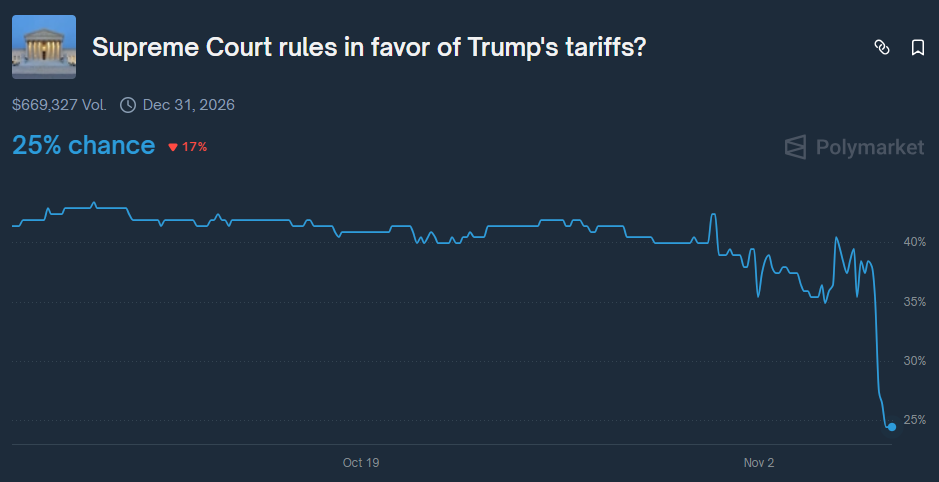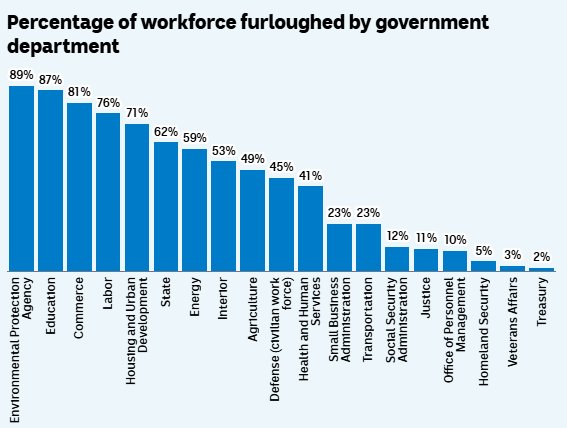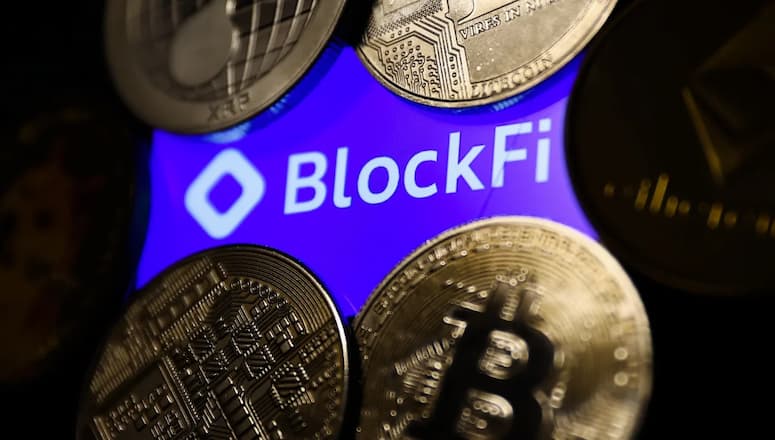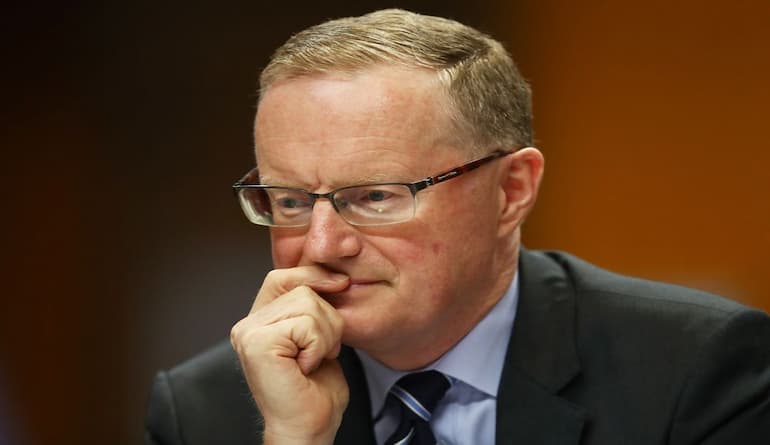Notícias de mercado & insights
Mantenha-se à frente dos mercados com insights de especialistas, notícias e análise técnica para orientar suas decisões de negociação.

Artificial intelligence stocks have begun to waver slightly, experiencing a selloff period in the first week of this month. The Nasdaq has fallen approximately 2%, wiping out around $500 billion in market value from top technology companies.

Palantir Technologies dropped nearly 8% despite beating Wall Street estimates and issuing strong guidance, highlighting growing investor concerns about stretched valuations in the AI sector.
Nvidia shares also fell roughly 4%, while the broader selloff extended to Asian markets, which experienced some of their sharpest declines since April.
Wall Street executives, including Morgan Stanley CEO Ted Pick and Goldman Sachs CEO David Solomon, warned of potential 10-20% drawdowns in equity markets over the coming year.
And Michael Burry, famous for predicting the 2008 housing crisis, recently revealed his $1.1 billion bet against both Nvidia and Palantir, further pushing the narrative that the AI rally may be overextended.
As we near 2026, the sentiment around AI is seemingly starting to shift, with investors beginning to seek evidence of tangible returns on the massive investments flowing into AI, rather than simply betting on future potential.
However, despite the recent turbulence, many are simply characterising this pullback as "healthy" profit-taking rather than a fundamental reassessment of AI's value.
Supreme Court Raises Doubts About Trump’s Tariffs
The US Supreme Court heard arguments overnight on the legality of President Donald Trump's "liberation day" tariffs, with judges from both sides of the political spectrum expressing scepticism about the presidential authority being claimed.
Trump has relied on a 1970s-era emergency law, the International Emergency Economic Powers Act (IEEPA), to impose sweeping tariffs on goods imported into the US.
At the centre of the case are two core questions: whether the IEEPA authorises these sweeping tariffs, and if so, whether Trump’s implementation is constitutional.
Chief Justice John Roberts and Justice Amy Coney Barrett indicated they may be inclined to strike down or curb the majority of the tariffs, while Justice Brett Kavanaugh questioned why no president before Trump had used this authority.
Prediction markets saw the probability of the court upholding the tariffs drop from 40% to 25% after the hearing.

The US government has collected $151 billion from customs duties in the second half of 2025 alone, a nearly 300% increase over the same period in 2024.
Should the court rule against the tariffs, potential refunds could reach approximately $100 billion.
The court has not indicated a date on which it will issue its final ruling, though the Trump administration has requested an expedited decision.
Shutdown Becomes Longest in US History
The US government shutdown entered its 36th day today, officially becoming the longest in history. It surpasses the previous 35-day record set during Trump's first term from December 2018 to January 2019.
The Senate has failed 14 times to advance spending legislation, falling short of the 60-vote supermajority by five votes in the most recent vote.
So far, approximately 670,000 federal employees have been furloughed, and 730,000 are currently working without pay. Over 1.3 million active-duty military personnel and 750,000 National Guard and reserve personnel are also working unpaid.

SNAP food stamp benefits ran out of funding on November 1 — something 42 million Americans rely on weekly. However, the Trump administration has committed to partial payments to subsidise the benefits, though delivery could take several weeks.
Flight disruptions have affected 3.2 million passengers, with staffing shortages hitting more than half of the nation's 30 major airports. Nearly 80% of New York's air traffic controllers are absent.
From a market perspective, each week of shutdown reduces GDP by approximately 0.1%. The Congressional Budget Office estimates the total cost of the shutdown will be between $7 billion and $14 billion, with the higher figure assuming an eight-week duration.
Consumer spending could drop by $30 billion if the eight-week duration is reached, according to White House economists, with potential GDP impacts of up to 2 percentage points total.


Bitcoin rockets powerful spike Bitcoin’s price has seemingly spiked out of nowhere in what has been in one of its strongest moves in days. With Bitcoin’s price suffering from sector volatility, it and most other cryptocurrencies has seen an aggressive sell off. This current rise in price is threatening to test the upper resistance point of the price range.
Synopsis of the price action The price of Bitcoin had been building and consolidating towards the base of its range before today’s sharp pump in price. After testing the bottom twice and failing, the price made its way back to the top. The jump in price seems to have been supported by a potential ‘Short Squeeze’.
A short squeeze occurs when large short positions attempt to close their positions at the same time. This drives the price of the asset higher forcing more shorts to close and creating a snowball effect. As stop losses become triggered the price receives a further boost.
This means that a short squeeze generally results in higher volume and higher volatility then other momentum breaks outs. As it can be seen in the chart below the price moved almost 400 dollars in 15 minutes which is a super powerful jump. The short-term target of $17,100 was touched, which is the top end of the range.
The resistance level has proven once again to be too strong and therefore may require a retest and larger volume to break. However, if it can break through the next target becomes $18,100 which provides a great potential risk/reward. With the fallout from FTX and other Cryptocurrency entities still facing bankruptcy and severe public distrust it will likely take some extremely positive news for the price to break out of the long-term range.
Until then it would be wise to be weary of breakouts.


Not even one week after crypto exchange FTX officially filed for bankruptcy another Cryptocurrency entity has felt the wrath and submitted its own Chapter 11. The spread and contagion effect from FTX was always a concern and now cryptocurrency lender BlockFi has fallen. BlockFi had been struggling even prior to the FTX collapse.
In fact, the company was bailed out with credit support form FTX of which the company could access up to USD 400 million. BlockFi is not a traditional exchange, rather a lender in which it used cryptocurrency assets as collateral for the loans. As the value of the crypto assets has declined the value of the company’s collateral became lower and lower and the company was unable to cover its liabilities.
Once the FTX crisis broke out, the support the credit offered by FTX was of course no longer available leading to a liquidity crisis. The bankruptcy filing outlined that the company currently has 256.9 million dollars of cash on hand which it says will provide enough liquidity in the short term to keep it operational until a restructuring can be done. The company owes approximately 100,000 creditors and the top creditor is the SEC is number which is owed 100 million dollars to settle charges it has in relation to one of its products that it offered.
The company has halted withdrawals from its platform and acknowledged the significant exposure it has to FTX. Will BlockFi end up like FTX? The manager of the financial group that advising BlockFi has made it clear that the situations Is not the same as FTX.
This is because they believe that the management teams of BlockFi are experienced, competent, and responsible as opposed to the leadership at FTX. There have been to date, “No failure of corporate controls and the company’s financial statements have shown to be trustworthy”. The difference in management and leadership does represent a potential safe exit for BlockFi and perhaps a lower level of negative impact on the crypto sector.
Ultimately, the situation surrounding BlockFi just highlights how precarious the whole FTX crisis is and the potential for other firms to be caught up in the fiasco. With such an interconnected market other exchanges and entities need to stay vigilant and aware of their exposure to the falling value of their assets.


The Chinese e-commerce platform Pinduoduo Inc. (NASDAQ: PDD) announced its unaudited Q3 financial results on Monday. The company beat revenue estimates for the quarter, but fell short of earnings per share (EPS) estimates. Revenue reported at $4.991 billion (an increase of 65% year-over-year) vs. $4.315 billion estimate.
EPS at $0.302 per share vs. analyst estimate of $0.673 per share. ''We continued to deepen our value creation in the third quarter,'' Lei Chen, Chairman and CEO of the company said in a press release. ''We will increase our R&D investment to further enhance the supply chain efficiency and agricultural digital inclusion,'' Chen added. The latest results had a positive impact on the stock price. Shares of Pinduoduo were up by around 14% on Monday, trading $74.97 a share.
Stock performance 1 month: +36.93% 3 month: +69% Year-to-date: +78% 1 year: +34% Pinduoduo price targets Citigroup: $79 Barclays: $70 B of A Securities: $89 HSBC: $93 JP Morgan: $23 DBS Bank: $96 Macquarie: $104 Pinduoduo is the 136 th largest company in the world with a market cap of $94.92 billion. You can trade Pinduoduo Inc. (NASDAQ: PDD) and many other stocks from the NYSE, NASDAQ, HKEX, ASX, LSE and DE with GO Markets as a Share CFD. Sources: Pinduoduo Inc., TradingView, MarketWatch, MetaTrader 5, Benzinga, CompaniesMarketCap


Phillip Lowe, governor of the Reserve Bank of Australia, (RBA) has issued an apology to the Australian public in his most recent statement. Lowe specifically apologised for providing guidance in 2020 and 2021 that the official cash would only rise in 2024. Instead, rate rises began earlier this year and rises have occurred in 7 straight months.
During that time many Australians took out home with the understanding of frozen rates at least until 2024. With inflation set to worsen and rise beyond 8% by the end of the year and the 30-day Interbank Cash rate futures pointing to a maximum cash rate of 3.865% by October next year it is not expected to get easier for Australian households. Furthermore, with the cost of living increasing, it is becoming increasingly difficult for Australians to afford their mortgages.
The apology from Lowe, whilst sincere does little to alleviate the short-term pain that will be felt by many families who have taken out home loans in the prior 12-18 months. The importance of the statements made by Lowe today are that the RBA will now adjust its messaging to the public to regain trust. Lowe attempted to justify the communication strategy at the time by outlining the exceptionality of the Pandemic and the circumstances that it brought, stating that, “It was dire times, and we decided that we would do everything we could.” Currently, the Australian dollar is $0.66 after bottoming at $0.62. as the USD has weakened and the Federals Reserve has become more open to lowering rates the AUD has recovered and regained some momentum.
The question remains, can the RBA build up trust with the public as it pushes forward in its fight against inflation or has faith in the Country’s central bank been diminished.


The USDCHF has just reached a significant support zone providing a potential entry for a low-risk high return trade. In recent weeks the USD has an aggressive pulled back on the back of weaker then expected inflation figures. This has benefited the CHF and most other non-USD currencies as expectations of a potential pivot grow and money moves away from the Greenback.
From a technical perspective the price of the USDCHF has fallen to its lowest price since August 2022. The price has also largely been in a ranging pattern since 2010 between 1.03436 0.8741. In addition, besides the Covid years, the price has been in a tighter range between 0.94 and 1.03.
The current price zone has been a really important area of support and in the most recent test of this area, in August the price bounced quite strongly. Interestingly, during times of higher market volatility the price extends its lower bound of the range from 0.94 to 0.87. For example, the prices extended its range during the GFC and the Covid pandemic.
However, generally, the pair trades in the tighter range. Therefore, as it is arguable if the current market conditions represent volatility as sinister as the GFC or the Pandemic this current price action lends itself to a potential bounce over a further sell off. The bounce is also supported by the RSI which is not just oversold but showing the potential for a divergence.
With the price at an ideal entry point, it allows for a high potential risk reward trade. The trade’s target is 1.0075 as seen on the price chart.


Shares of Deere rise as financial results exceed expectations Deere & Company (NYSE: DE) announced financial results on Wednesday for the fourth quarter that ended on October 30, 2022. The US manufacturer of farm machinery and industrial equipment reported revenue of $15.536 billion for the quarter, which was above analyst forecast of $13.443 billion. Earnings per share reported at $7.44 per share vs. $7.112 per share expected. ''Deere’s strong performance for both the fourth quarter and full year is a tribute to our dedicated team of employees, dealers, and suppliers throughout the world,'' John C.
May, CEO of the company said in a statement. ''We’re proud of their extraordinary efforts to overcome supply-chain constraints, increase factory production, and deliver products to our customers,'' he added. The stock was up by around 5% on Wednesday, trading at $441.33. Stock performance 1 month: +12.79% 3 month: +69% Year-to-date: +67% 1 year: +94% Deere & Company price targets Deutsche Bank: $374 Goldman Sachs: $420 Argus Research: $420 Citigroup: $425 Morgan Stanley: $424 Credit Suisse: $447 Wells Fargo: $423 Oppenheimer: $365 Jefferies: $400 JP Morgan: $325 Deere & Company is the 84 th largest company in the world with a market cap of $132.90 billion.
You can trade Deere & Company (NYSE: DE) and many other stocks from the NYSE, NASDAQ, HKEX, ASX, LSE and DE with GO Markets as a Share CFD. Sources: Deere & Company, TradingView, MarketWatch, MetaTrader 5, Benzinga, CompaniesMarketCap

